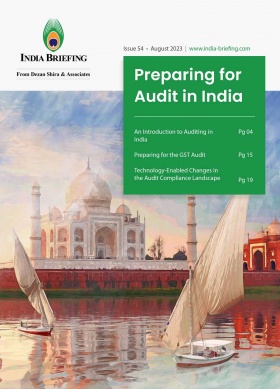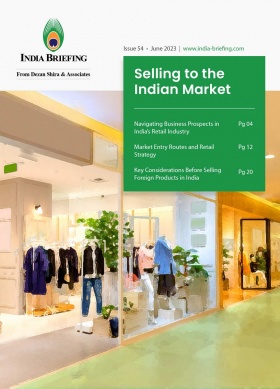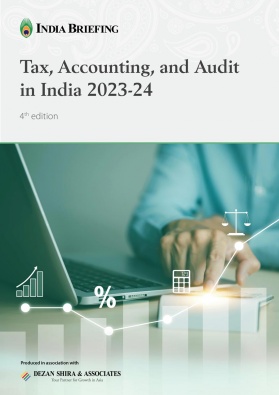Manufacturing Consumer Durables in India: Changes to the White Goods PLI Scheme
India has made changes to the White Goods PLI Scheme, which aims to increase local production of consumer durables like ACs and LEDs. Now selected companies must provide a certification from a registered cost accountant pertaining to related party sales and the calculation of the arm’s length price. Furthermore, the Department for Promotion of Industry and Internal Trade (DPIIT) has announced that the administrative ministry may conduct site visits to assess the scheme’s implementation progress and directly engage with industry stakeholders to gather feedback.
Changes to the PLI Scheme for White Goods
In response to numerous requests and suggestions received from beneficiaries of the Production Linked Incentive (PLI) Scheme for White Goods and various industry associations, several amendments have been introduced to the original PLI Scheme Guidelines. These modifications aim to streamline the Scheme’s operation and enhance the ease of conducting business.
The following alterations have been integrated into the PLI Scheme for White Goods (ACs and LED Lights) guidelines:
- Replacement of the Comparable Uncontrolled Price (CUP) method with the Cost-Plus method for determining sales prices in cases of captive consumption or supplies to group companies. This also necessitated a modification in the definition of ‘Arm’s length.’
- Inclusion of investments in tool rooms for the manufacturing of molds and dies, among the eligible investments under capital investment.
- Extending the time frame for beneficiaries to notify the establishment of an additional manufacturing facility by one more year, in addition to the initial two years.
- Revision of the deadline for claim submission and the refund of excess incentives by beneficiaries due to any discrepancies between statutory compliance and the records provided during claim submission.
- Introduction of site visits by the administrative ministry.
- The provision for the rollover of bank guarantees.
- Appropriate adjustments in the annexures accompanying the Scheme Guidelines.
The PLI Scheme for White Goods: Key goals
The key goal of the PLI Scheme for White Goods is to establish a comprehensive ecosystem for the manufacturing of components and sub-assemblies for air conditioners (ACs) and LED lights in India, thereby positioning the country as an essential player in global supply chains. This initiative is expected to significantly boost domestic value addition, elevating it from the current 15-20 percent to an impressive 75-80 percent.
|
Existing Manufacturing Units of White Goods in the Component Chain of AC and LED in India |
|
|
State |
Number of Plants |
|
Andhra Pradesh |
5 |
|
Gujarat |
10 |
|
Goa |
1 |
|
Haryana |
4 |
|
Himachal Pradesh |
1 |
|
Karnataka |
2 |
|
Maharashtra |
5 |
|
Tamil Nadu |
4 |
|
Rajasthan |
4 |
|
Uttar Pradesh |
6 |
|
Telangana |
1 |
|
Uttarakhand |
6 |
|
West Bengal |
1 |
The White Goods PLI Scheme is set to run for a duration of seven years, spanning from the fiscal year 2021-22 to 2028-29, with a total budget of INR 62.38 billion (approx. US$831.27 million).
Approved by the Union Cabinet on April 7, 2021, the PLI Scheme for White Goods was formally notified by the Department for Promotion of Industry and Internal Trade (DPIIT) on April 16, 2021. The scheme guidelines were made public on June 4, 2021. In response to feedback and consultations with stakeholders to ensure smooth implementation, two corrigenda to the Scheme Guidelines were issued on August 16, 2021, and February 24, 2022, respectively.
Domestic production started by 15 companies
Out of the 64 selected beneficiaries, 15 who have chosen a gestation period up to March 31, 2022, have already commenced commercial production. The remaining beneficiaries, who have opted for a gestation period extending up to March 31, 2023, are in various stages of implementation.
Leading consumer durable brands Daikin, Panasonic, Havells, and Syska are among the beneficiaries of the PLI White Goods Scheme. For more information, see India’s PLI Scheme 2.0 for White Goods (AC and LED).
What are PLI Schemes?
The Production-Linked Incentive (PLI) Schemes are a strategic initiative by the Government of India, aligned with the vision of ‘Atmanirbhar Bharat’ (or Self-Reliant India), and aimed at fostering domestic manufacturing as a catalyst for India’s economic growth and employment generation. The PLI Schemes involve significant financial allocations, with a total outlay of INR 1.97 trillion (over US$26 billion) for 13-14 key sectors.
All sectors approved under the PLI Schemes adhere to a broad framework centered around new and emerging technologies. Capacity development in these areas offer India the opportunity to leapfrog and achieve substantial economic gains while also harnessing their export potential.
The core objectives of the PLI Schemes are to improve efficiency, foster economies of scale within the manufacturing sector, and position Indian manufacturers as globally competitive, thereby facilitating their integration into global value chains.
Under the PLI Schemes, incentives are based on incremental sales of products manufactured domestically and are disbursed over a specified period. The PLI Schemes allow a gestation period for applicants to begin commercial production. Incentives are not guaranteed and are released based on annual performance and meeting stipulated criteria in the respective Scheme Guidelines.
Consumer durables industry in India
White goods or consumer durables encompass significant household appliances, including air conditioners (ACs), LED lights, dishwashers, clothes dryers, drying cabinets, freezers, refrigerators, kitchen stoves, water heaters, washing machines, microwave ovens, and induction cookers.
India allows 100 percent foreign direct investment (FDI) under the automatic route into the consumer durable goods manufacturing industry.
Several states in India have introduced tailored incentives for manufacturers in the consumer durables sector. These incentives encompass support for capital expenditures, interest payments, and land acquisition, among other benefits. Additionally, there are personalized incentive packages accessible to substantial and mega investors in various states.
The white goods industry in India has exhibited robust growth in recent years, with an estimated market value of US$13.66 billion in the fiscal year 2021. Within this industry, the most substantial market shares were captured by ACs, refrigerators, and LED products.
Market Projections for White Goods in India
India’s white goods market is projected to surpass US$21 billion by 2025, at a compound annual growth rate (CAGR) of 11 percent. On average, domestic manufacturing contributes approximately US$4.6 billion to this industry, per data from Invest India.
- The air conditioner market in India is expected to reach US$9.8 billion by FY 2025-26, up from US$3.8 billion in FY21, with a remarkable CAGR of 20.8 percent.
- The refrigerator market in India is forecasted to grow to US$6.7 billion by FY26, compared to US$3.8 billion in FY21, exhibiting a CAGR of 9.5 percent.
- The LED lights market in India is set to expand to US$8.1 billion by FY26, rising from approximately US$3.6 billion in FY21, driven by a CAGR of 18.64 percent.
- The personal care appliances (dryers, trimmers, and straighteners) Market in India is anticipated to increase to around US$1.4 billion by FY26, a substantial increase from US$435 million in FY21, with a CAGR of 21 percent.
- The dishwasher market in India is poised to reach US$93.5 million by FY26, up from US$45.6 million in FY21, experiencing a CAGR of 10.8 percent.
Also read
- How Business Matchmaking Services Can Help Your India Market Strategy
- Major Industries and Preferential Policies for Foreign Investment in Gujarat
- Tamil Nadu’s Industrial Parks and SEZs under SIPCOT: A Brief for Investors
About Us
India Briefing is produced by Dezan Shira & Associates. The firm assists foreign investors throughout Asia from offices across the world, including in Delhi and Mumbai. Readers may write to india@dezshira.com for more support on doing business in India.
We also maintain offices or have alliance partners assisting foreign investors in Indonesia, Singapore, Vietnam, Philippines, Malaysia, Thailand, Italy, Germany, and the United States, in addition to practices in Bangladesh and Russia.
- Previous Article Talent Availability in India’s Tier-2 Cities
- Next Article India Simplifies GST Refund of Exports Remittances in Special Rupee Vostro Accounts









